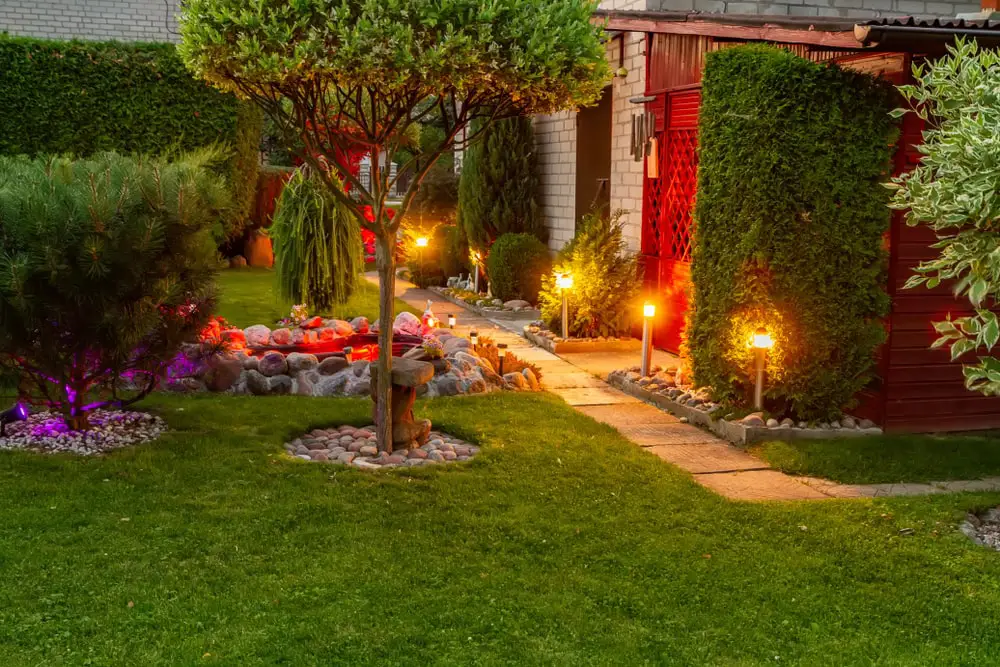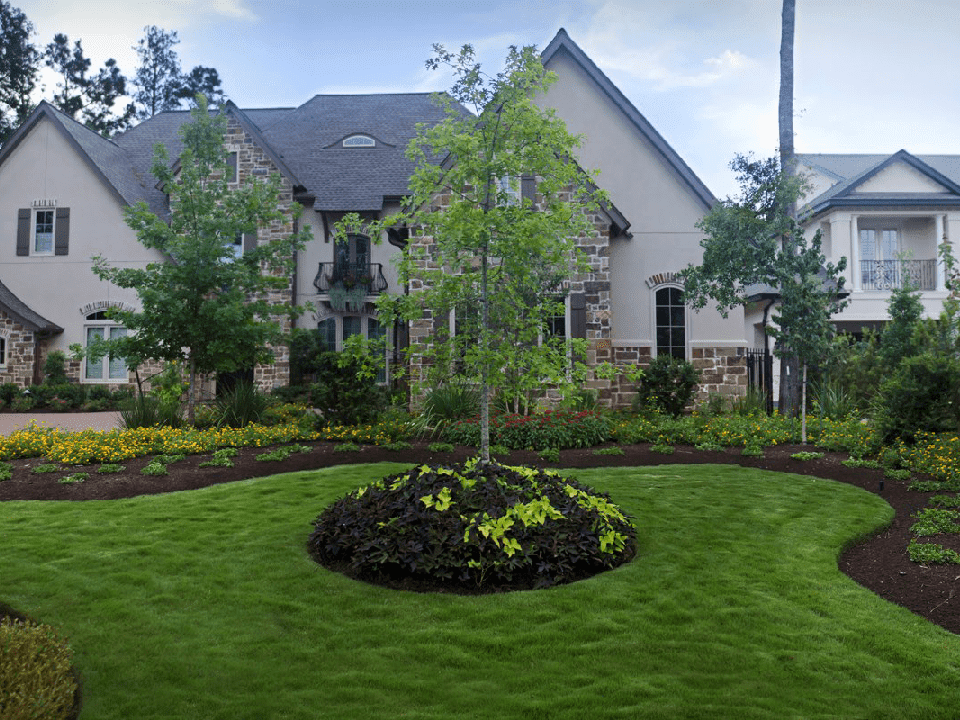The Main Principles Of Hilton Head Landscapes
Table of ContentsFacts About Hilton Head Landscapes UncoveredHow Hilton Head Landscapes can Save You Time, Stress, and Money.Everything about Hilton Head LandscapesHilton Head Landscapes Things To Know Before You BuyThe 2-Minute Rule for Hilton Head LandscapesNot known Factual Statements About Hilton Head Landscapes Hilton Head Landscapes Things To Know Before You BuyA Biased View of Hilton Head Landscapes
Kind compatibility is additionally a significant element of unity in designone or two strikingly different kinds benefit comparison and focus, however typically all other types ought to have some similarities for a combined look. Appearance describes exactly how coarse or fine the surface area of the plant or hardscape product feels and/or looks.
Examples of plants with rugged texture consist of philodendrons, agaves, bromeliads, hollies, hands, and hydrangeas. Attributes that create great texture consist of small vegetation; slim, strappy leaves (yards) or tall, slim stems; tiny, thick branches and little branches; long stems (creeping plants); and little, delicate blossoms.
Hilton Head Landscapes - Truths
The majority of plants are medium texture, in that they can not be described as having either coarse or fine texture. Medium-textured plants act as a background to link and combine the rugged- and fine-textured plants.

To make a room really feel smaller sized, put the rugged appearances along the external boundary and the fine structures closest to the customer. The information of the rugged appearance makes the plants show up closer and makes the room really feel smaller sized. The viewed structure of plants can likewise alter with the distance from the plant.
The 3-Minute Rule for Hilton Head Landscapes
Bold shades boost the contrast and make the texture show up coarser, while soft shades can squash texture. Hardscape with a crude texturesuch as extremely rough rocks and vibrant, large timberstends to make all plant product appear more moderate textured. Developers usually establish a texture research (Figure 8) theoretically to help decide the plan of plant materials.
Number 8. Texture research study. Color in plant material and hardscape includes rate of interest and selection to the landscape. Color is one of the most noticeable aspect in the landscape and is typically the emphasis of many home owners; nevertheless, it is additionally the most short-lived aspect, generally lasting just a few weeks a year for specific plants.
How Hilton Head Landscapes can Save You Time, Stress, and Money.
A simple summary of the color wheel consists of the three primaries of red, blue, and yellow; the three second shades (a mix of 2 primaries) of environment-friendly, orange, and violet; and 6 tertiary colors (a mix of one surrounding primary and secondary shade), such as red-orange. Color theory describes the relationship of colors per other and exactly how they must be made use of in a make-up.

Comparable (occasionally called harmonious) color pattern are any type of 3 to 5 colors that are adjacent on the shade wheel, such as red, red-orange, orange, yellow-orange, and yellow, or blue, blue-violet, and violet (landscaping hilton head sc). The colors are relevant to each other look at this website because they normally include 2 primaries blended to create a second and two tertiary shades, which indicates they share common residential properties
Corresponding shades are usually discovered naturally in blossoms; a common set is yellow and violet. Shade is discovered in the blossoms, foliage, bark, and fruit of plants.
Hilton Head Landscapes - The Facts
Green vegetation in all its numerous shades is the leading color by amount, however various other colors record interest quicker as a result of their high comparison to the color environment-friendly. Color is additionally discovered in buildings, rocks, pavers, wood, and furnishings. Many shades in natural products, such as stone and timber, are generally low-key and have a tendency to be variants of brown, tan, and light yellow.
Colors have residential or commercial properties that can affect emotions, spatial understanding, light quality, balance, and focus. Great shades tend to be relaxing and need to be used in locations for leisure and tranquility.
3 Easy Facts About Hilton Head Landscapes Explained
The "temperature level" of shades can also impact the understanding of range. Great colors often tend to recede and are regarded as being farther away, making an area really feel larger. Cozy colors have a tendency to advancement and are perceived as being better, making a room really feel smaller. Color can additionally be used to catch interest and straight views.
Intense yellow, which has the highest possible intensity, likewise has a high comparison with all various other colors (usually explained as a "pop" of shade) and need to be used sparingly. A percentage of intense color has as much visual weight as a huge quantity of a more suppressed or weaker shade.
Comparable (occasionally called unified) color pattern are any type of 3 to 5 shades that are surrounding on the shade wheel, such as red, red-orange, orange, yellow-orange, and yellow, or blue, blue-violet, and violet. The colors relate per various other since they typically consist of 2 key shades blended to develop a secondary and 2 tertiary colors, which means they share usual homes.
Some Known Questions About Hilton Head Landscapes.
They tend to have high comparison between them. The most typical collections are violet and yellow, red and environment-friendly, and blue and orange. Complementary colors are frequently found normally in flowers; an usual pair is yellow and violet. Shade is discovered in the flowers, vegetation, bark, and fruit of plants.
Environment-friendly foliage in all its various tones is the dominant shade by quantity, yet various other colors record focus much more readily due to their high contrast to the color environment-friendly - Landscaping bluffton sc - http://go.bubbl.us/e336a4/f200?/New-Mind-Map. Color is also located in buildings, rocks, pavers, timber, and furniture. Most colors in all-natural materials, such as rock and wood, are typically soft and tend to be variants of brownish, tan, and pale yellow
Some Known Facts About Hilton Head Landscapes.
Colors have residential properties that can influence emotions, spatial perception, light high quality, balance, and focus. Cool shades often tend to be calming and should be used in locations for leisure and peacefulness.
The "temperature level" of colors can also affect the assumption of range. Great colors tend to decline and are regarded as being further away, making an area feel bigger. Warm colors often tend to breakthrough and are viewed as being closer, making a room really feel smaller. Shade can likewise be used to record interest and straight sights.
Intense yellow, which has the highest possible strength, additionally has a high comparison with all other colors (typically explained as a "pop" of shade) and must be utilized sparingly. A percentage of intense shade has as much aesthetic weight as a huge quantity of a much more suppressed or weaker shade.